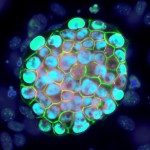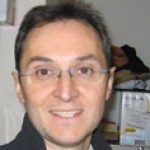Link to Pubmed [PMID] – 10468599
Proc. Natl. Acad. Sci. U.S.A. 1999 Aug;96(18):10278-83
In 1979, a BALB/cJ mouse was identified with an exceptionally long body. This phenotype was found to be caused by a recessive mutation, designated longjohn (lgj), that mapped to the proximal region of chromosome 15. Several years later, a mouse with a similarly elongated body was identified in an outbred stock after chemical mutagenesis with ethylnitrosourea. This phenotype also was caused by a recessive mutation, designated strigosus (stri). The two mutations were found to be allelic. A third allele was identified in a DBA/2J mouse and was designated longjohn-2J (lgj(2J)). Analysis of skeletal preparations of stri/stri mice indicated that the endochondral ossification process was slightly delayed, resulting in an extended proliferation zone. A recent study reported that mice overexpressing brain natriuretic peptide, one of the members of the natriuretic peptide family, exhibit a skeletal-overgrowth syndrome with endochondral ossification defects. The Npr3 gene coding for type C receptor for natriuretic peptides (NPR-C), which is mainly involved in the clearance of the natriuretic peptides, mapped in the vicinity of our mouse mutations and thus was a candidate gene. The present study reports that all three mutations involve the Npr3 gene and provides evidence in vivo that there is a natriuretic-related bone pathway, underscoring the importance of natriuretic peptide clearance by natriuretic peptide type C receptor.

